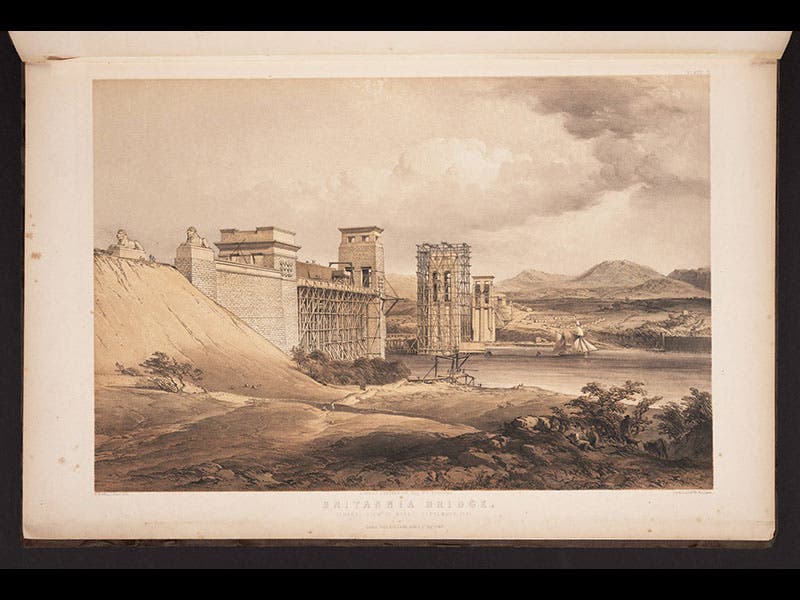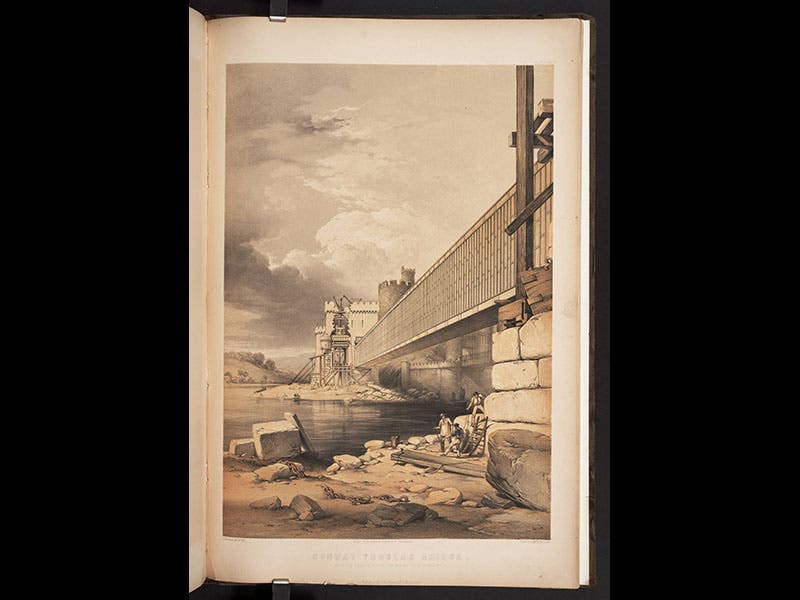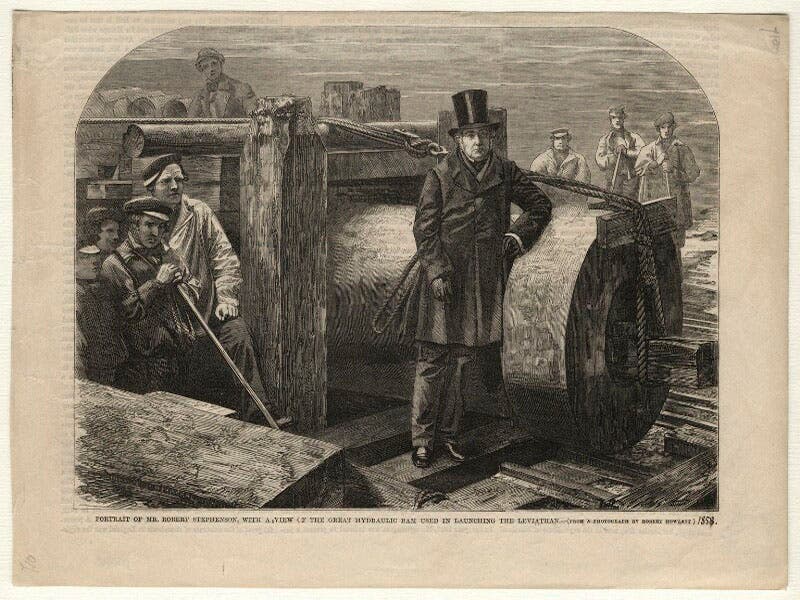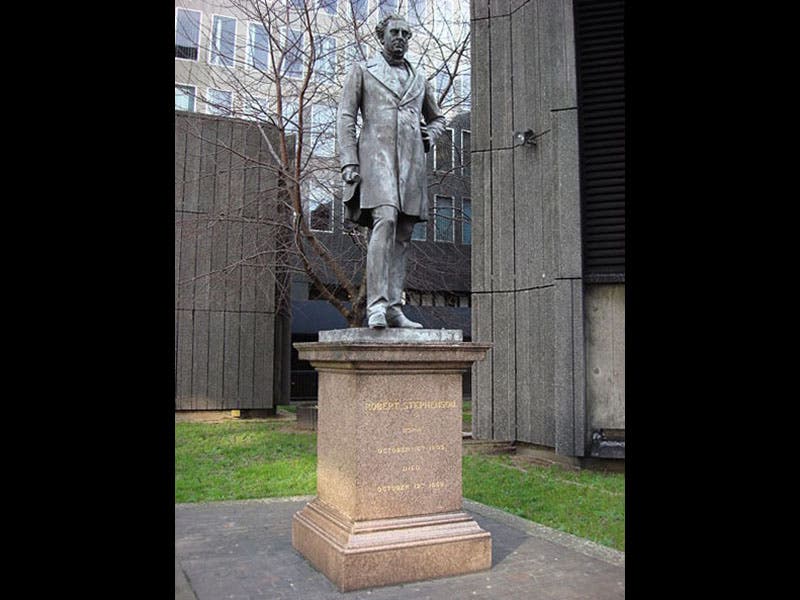Scientist of the Day - Robert Stephenson
Robert Stephenson, a British civil and mechanical engineer, was born Oct. 16, 1803. Robert was the son of the equally notable engineer, George Stephenson, and when George was bidding to supply the locomotives for the Liverpool and Manchester Railway in 1829, son Robert designed the famous Rocket, which won the Rainhill Trials and secured his father's successful bid. Robert moved on to designing bridges and right-of way, and we focus today on the most sensational of those designs, the tubular bridges erected at Conwy Castle in North Wales in 1848, and the Britannia Bridge that crossed the Menai Straits to Anglesey Island, completed in 1850. The unique feature of both bridges was that the railways, instead of running on top of tubular trusses, ran right through them. After tall stone piers were erected in the channels, long wrought-iron tubes were fabricated on shore and then floated into position on barges. The tubes were then hoisted into place by hydraulic jacks. It was quite a feat of mechanical engineering. The on-site engineer was Edwin Clark, who subsequently published a book, The Britannia and Conway Tubular Bridges (1850), which contains attractive lithographs of the construction process. We showed five of those lithographs when we featured Clark as our Scientist of the Day on Oct. 22, 2015, but there is no reason why we cannot display several of them again. The three above show the building of the towers at Menai Straits (second image), the construction of one of the Britannia Bridge tubes (third image), and a Conwy Bridge tube in place (third image).
There are a number of portraits of Stephenson in the National Portrait Gallery in London; we see above a formal portrait by John Lucas (first image; the locomotive in the drawing on the table is not the Rocket, but another engine that Stephenson designed), and a wood engraving after a photograph (fifth image) of Stephenson standing before a hydraulic ram that he designed to help launch the SS Great Eastern in 1858 (the year of his death). But an especially appropriate image in today's context is a group portrait of all of England's great engineers at mid-19th-century (sixth image). Stephenson is seated right in the center, and the Britannia tubular bridge forms the backdrop for the scene. This is a mezzotint after an original painting by John Lucas.
And if you prefer three-dimensional portraits, there is a very nice statue of Stephenson outside Euston Station in London (seventh image).
Dr. William B. Ashworth, Jr., Consultant for the History of Science, Linda Hall Library and Associate Professor, Department of History, University of Missouri-Kansas City. Comments or corrections are welcome; please direct to ashworthw@umkc.edu.













